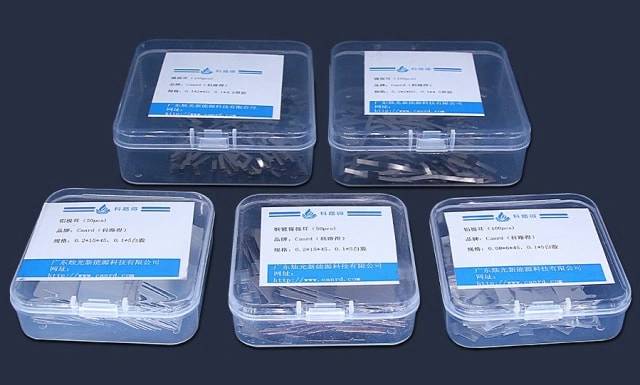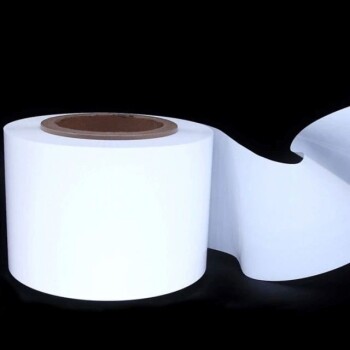
battery material
Nickel Aluminum Tabs for Soft Pack Lithium Batteries
Item Number : BC-11
Price varies based on specs and customizations
- Material
- Positive aluminum; negative nickel.
Shipping:
Contact us to get shipping details Enjoy On-time Dispatch Guarantee.
Why Choose Us
Reliable PartnerEasy ordering process, quality products, and dedicated support for your business success.
Introduce
Lithium-ion polymer batteries are used in everyday devices such as mobile phones, Bluetooth devices and laptops. Tabs are an important part of these batteries. They act as a connector between the positive and negative terminals of the battery, allowing charging and discharging. These contact points are located inside the battery, rather than the externally visible copper flakes.The tabs are made of different materials: the positive pole is aluminum, the negative pole is nickel, and the negative pole also has nickel-plated copper. They consist of a combination of thin films and metal strips. The film acts as an insulating layer, preventing short circuits and leakage during packaging.
There are three types of films currently on the market: black glue, white glue, and single-layer glue. Commonly used vinyl films have a three-layer structure, and each layer has a different melting point: melanin (66°C), PE (105°C) and PP (137°C).
Detail & Parts





Application
| Negative electrode material | nickel | Cathode material | aluminum |
| tape material | white glue | tape material | J7-100 |
| Substrate thickness | 0.1士0.1mm | Substrate thickness | 0.1±0.01mm |
| width | 10±0.1mm | width | 4±0.1mm |
| unit length | 50士1mm | unit length | 60±1mm |
| tab tape width | 5士0.5mm | tab tape width | 4±0.5mm |
| Total thickness of tab | 0.3±0.02mm | Total thickness of tab | 0.3±0.02mm |
| Adhesive strength between tab and tape | >7N/15mm | Adhesive strength between tab and tape | >7N/15mm |
| Corrosion resistance | Soaked in the electrolyte for 4 hours at 85°C, the material is stable, and the bonding between the lug and the substrate is stable. | ||
FAQ
What Considerations Should Be Made For Battery Case Gaskets?
What Is The Role Of Battery Case Gaskets?
What Are Lithium-air Battery Cases?
How Should Button Battery Cases Be Chosen For Specific Applications?
4.8
out of
5
The tabs arrived promptly and were exactly as described. The quality is excellent, and I'm very satisfied with the purchase.
4.9
out of
5
These tabs are a great value for the price. They're well-made and durable, and they've made a significant difference in the performance of my batteries.
4.7
out of
5
I'm very impressed with these tabs. They're easy to install and they've significantly improved the performance of my batteries.
4.8
out of
5
These tabs are exactly what I needed. They're the perfect size and they fit my batteries perfectly. I'm very happy with the purchase.
4.9
out of
5
I'm very impressed with the quality of these tabs. They're well-made and they've made a big difference in the performance of my batteries.
4.7
out of
5
These tabs are a great value for the price. They're well-made and they've improved the performance of my batteries.
4.8
out of
5
I'm very happy with these tabs. They're easy to install and they've made a significant difference in the performance of my batteries.
4.9
out of
5
These tabs are exactly what I needed. They're the perfect size and they fit my batteries perfectly. I'm very happy with the purchase.
4.7
out of
5
I'm very impressed with the quality of these tabs. They're well-made and they've made a big difference in the performance of my batteries.
4.8
out of
5
These tabs are a great value for the price. They're well-made and they've improved the performance of my batteries.
4.9
out of
5
I'm very happy with these tabs. They're easy to install and they've made a significant difference in the performance of my batteries.
4.7
out of
5
These tabs are exactly what I needed. They're the perfect size and they fit my batteries perfectly. I'm very happy with the purchase.
4.8
out of
5
I'm very impressed with the quality of these tabs. They're well-made and they've made a big difference in the performance of my batteries.
4.9
out of
5
These tabs are a great value for the price. They're well-made and they've improved the performance of my batteries.
REQUEST A QUOTE
Our professional team will reply to you within one business day. Please feel free to contact us!
Related Products

Battery Lab Equipment Battery Capacity and Comprehensive Tester
The scope of application of the battery comprehensive tester can be tested: 18650 and other cylindrical, square lithium batteries, polymer batteries, nickel-cadmium batteries, nickel-metal hydride batteries, lead-acid batteries, etc.

Polyethylene Separator for Lithium Battery
The polyethylene separator is a key component of lithium-ion batteries, located between the positive and negative electrodes. They allow the passage of lithium ions while inhibiting electron transport. The performance of the separator affects the capacity, cycle and safety of the battery.

Professional Cutting Tools for Carbon Paper Cloth Diaphragm Copper Aluminum Foil and More
Professional tools for cutting lithium sheets, carbon paper, carbon cloth, separators, copper foil, aluminum foil, etc., with round and square shapes and different sizes of blades.
Related Articles

Electrolytic Batteries A Solution to the Growing Energy Demands
The design of electrolytes remains a challenge, but automated discovery and the power of AI are promising tools for advancing this field.

Electrochemical Cells: Generating Electricity and Driving Reactions
Electrochemical cells, like batteries, play a vital role in energy storage by converting chemical energy to electrical energy and vice versa. Explore the workings, types, and significance of these cells.

Design and Application of Reference Electrodes in Lithium Batteries
This article discusses the selection and design of reference electrodes for lithium batteries, focusing on active materials like lithium metal, lithium alloys, and lithium-embedded oxides.

Design Principle and Application of Reference Electrodes for Lithium Batteries
Discusses the design principles, types, applications, and future directions of reference electrodes in lithium batteries.

Carbon Coating for Surface Modification of Silicon-Based Materials in Lithium-Ion Batteries
This article discusses the application of carbon coatings to improve the performance of silicon-based anode materials in lithium-ion batteries.

The Invisible Variable: Why Electrolytic Cell Hygiene Defines Your Data
Proper electrolytic cell maintenance prevents dangerous reactions and ensures data integrity. Learn the critical "no metal brush" rule and safety protocols.

The Thermodynamics of Patience: Preventing Electrolytic Cell Overload
Overloading an electrolytic cell isn't just an error; it's a systemic failure. Learn the physics of safety, the risks of excess energy, and how to maintain control.